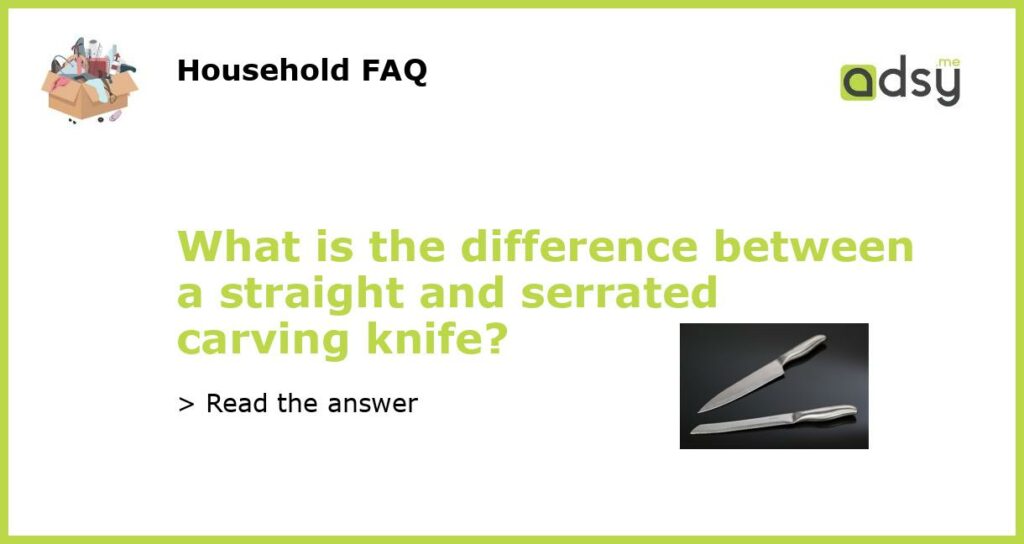Straight or Serrated: Understanding the Difference between Carving Knives
Carving is an art that requires precision and skill. However, it is not just about the technique, but also the tools that you are using. One of the most important tools in carving is the carving knife. There are two types of carving knives, straight and serrated. In this article, we will discuss the difference between the two and help you choose the right one for your carving needs.
Straight Carving Knives
A straight carving knife is a knife with a smooth blade that has a sharp edge. It is designed to cut small, precise slices of meat or poultry. Straight carving knives are ideal for slicing roast beef, ham, and turkey. They are also used for cutting vegetables and fruits. These knives usually come with a long, slender blade that provides the control and flexibility required for carving.
A straight carving knife is designed for slicing, not sawing. Therefore, it requires a steady motion and constant pressure to get the desired results. One of the advantages of a straight carving knife is that it allows you to control the blade’s angle, resulting in uniform slices of meat with a smooth surface.
Serrated Carving Knives
A serrated carving knife is a knife with a blade that has a series of teeth along its edge. These teeth are designed to cut through tough surfaces that a straight carving knife cannot. Serrated carving knives are used for cutting bread and cakes, cutting through the skin of citrus fruits, and slicing tender meats like brisket and prime rib.
Serrated carving knives are ideal for cutting through tough skins and crusts, but they are not suitable for slicing soft and tender meats. When using a serrated carving knife, it is essential to use a back-and-forth sawing motion to get the desired results.
Choosing the Right Knife
Choosing the right carving knife depends on your personal preference and the type of food you are carving. If you are carving meat and poultry, a straight carving knife is the best choice. If you are cutting through tough skins and crusts, a serrated carving knife is the right choice. However, if you need to do both, consider getting a set that includes both types of knives.
Caring for Your Carving Knives
Regardless of which carving knife you choose, it is essential to take proper care of your knives to maintain their sharpness and prolong their lifespan. Always wash your carving knives by hand with warm water and mild soap. Dry them with a towel immediately after washing to prevent water spots or rust. Store them in a knife block or a knife sheath to protect the blade from damage. Finally, sharpen your knives regularly with a sharpening stone to keep them razor-sharp and in top-notch condition.






